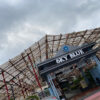Listing Details
Whether you’re planning a leisurely Pacific Northwest getaway or researching regional transit options, traveling through Oregon by rail is a memorable way to see the state. Trains offer relaxed comfort, panoramic views, and convenient station access to city centers, historic towns, and outdoor gateways. This long-form guide pulls together everything a traveler, blogger, or local-business owner needs to know about Amtrak stations in Oregon—their character, what to expect, how to plan, and how to turn a simple stop into a mini-adventure.
Note: for a full list of stations and quick reference info, check the dedicated guide amtrak stations in oregon
Why travel Oregon by train?
Scenery without effort. Unlike driving or flying, the train lets you drink in changing landscapes—Willamette Valley vineyards, Cascade foothills, marshes and high desert—while you relax.
Central arrivals. Most Oregon stations are near downtowns, making it easy to walk to shops, restaurants, museums and hotels.
Lower stress, higher comfort. No freeway traffic, no parking search, and more legroom than buses or planes.
Sustainable choice. Trains are one of the greener transportation options—good for travelers who prioritize lower carbon journeys.
Overview: the main Amtrak routes that serve Oregon
Amtrak Cascades — Regional service linking Eugene ↔ Portland ↔ Seattle ↔ Vancouver, BC. Ideal for day trips and multi-stop regional itineraries.
Coast Starlight — Long-distance route between Los Angeles and Seattle that cuts through Oregon’s heart (Eugene, Albany, Salem, Portland, Klamath Falls, etc.), prized for spectacular views.
(Other long-distance services connect via nearby hubs; schedules vary seasonally.)
Station-by-station snapshot (what makes each stop special)
Portland — Union Station (the hub)
Why go: Portland’s main gateway — architecture, transit links (light rail, buses), and immediate access to the Pearl District, riverfront, and downtown attractions.
Good for: City breaks, connecting to Cascades or long-distance trains, first-time visitors.
Tip: Give yourself 30–60 minutes after arrival to drop luggage and get oriented — plenty of cafés and bike rentals nearby.
Eugene
Why go: College town vibe, arts scene, and excellent access to river trails and regional outdoor activities.
Good for: Weekend getaways, university events, craft-beer fans.
Tip: If arriving by Cascades, check nearby museums and the riverfront bike path.
Salem
Why go: State capital access + closeness to Willamette Valley wineries and historic downtown.
Good for: Government/business travelers who also want wine-country detours.
Tip: Combine a short city tour with an afternoon in nearby tasting rooms.
Albany
Why go: Small-town charm, antique stores, and an easy layover spot between larger cities.
Good for: Relaxed stopovers; travelers who appreciate vintage main streets and slower pace.
Tip: Stroll morning markets and local cafés for an authentic local feel.
Oregon City
Why go: Pioneering history, easy access to waterfalls and heritage museums — a short hop from Portland.
Good for: History buffs and short-day trips from the metro area.
Tip: Bring comfortable shoes for historic trails and waterfall viewpoints.
Klamath Falls
Why go: Gateway to Crater Lake and southern Oregon wilderness; strong wildlife-watching opportunities.
Good for: Outdoor adventurers and birdwatchers.
Tip: Consider a multi-day stay to explore Crater Lake National Park or local refuges.
Chemult & other small stops
Why go: Quiet, rural access to forests, ski areas and trailheads. Perfect for travelers who want off-the-grid nature.
Good for: Hikers, skiers, and those seeking solitude.
Tip: Smaller stations may be unstaffed—plan arrivals and last-mile transport ahead.
How to plan your trip (step-by-step)
Choose your route: Decide whether you want regional hops (Cascades) or a long scenic run (Coast Starlight).
Book early: Popular holiday weekends and seasonal windows (fall foliage, summer travel) can sell out—reserve seats early.
Check station amenities: Larger stations have waiting rooms, restrooms, and food options. Smaller stops may have only shelters.
Plan last-mile transport: Identify taxi/rideshare availability or local buses that meet trains—some rural stops have limited services.
Pack smart: Bring layers (Oregon weather varies), binoculars for nature stops, and a daypack for station-side exploring.
Allow buffer time: Trains can run early or late—give yourself flexible plans for connections.
What to expect at Oregon Amtrak stations
Staffing: Portland and Eugene are typically staffed; smaller stations may be unstaffed or have limited hours.
Accessibility: Most stations have ADA-compliant platforms and services—reserve assistance if you need help boarding.
Baggage: Checked baggage service is available at select larger stations—check Amtrak’s baggage policy in advance.
Food & restrooms: Varies by station size; bring snacks for rural stops.
Sample itineraries (3 ideas)
1-Day Scenic Loop: Portland → Salem → Portland (Cascades day trip)
Take an early Cascades train to Salem, visit the Capitol and a nearby winery, return to Portland by evening. Great for a relaxed day of culture + wine.
2-Day Nature Break: Portland → Klamath Falls → Crater Lake
Ride the Coast Starlight to Klamath Falls, overnight, then spend Day 2 exploring Crater Lake or nearby wildlife refuges.
Multi-stop Cultural Tour: Portland → Albany → Eugene
Combine city culture in Portland, antique-hopping in Albany, and arts + river trails in Eugene over a long weekend.
SEO & content tips if you’re posting this blog on your site (how to help it rank)
Use the primary phrase naturally — once in the title and early in the content; include it (linked) to a comprehensive resource or main landing page — e.g.,
Add local modifiers and long-tail variations: “Amtrak stations near Portland OR,” “Coast Starlight stops Oregon,” “train travel Eugene to Portland.”
Include practical, up-to-date details: station hours, amenities, and exact routes—these satisfy user intent and improve dwell time.
Use tables and lists for scannability (both humans and search crawlers like structured data).
Add images with descriptive alt text (e.g., “Portland Union Station platform at sunset”) to improve visual appeal and SEO.
FAQ — quick answers travelers ask most
Q: Which Amtrak station in Oregon is the busiest?
A: Portland Union Station is the main hub and busiest stop.
Q: Can I reach Oregon’s coast by Amtrak?
A: Most Amtrak service runs inland; use station towns as hubs and connect via local buses or drives to coastal destinations.
Q: Are the stations safe to wait at late at night?
A: Major stations maintain staff and security presence; smaller stations are quieter and less staffed—use caution and plan evening arrivals at staffed stops when possible.
Q: Are bikes allowed on Oregon Amtrak trains?
A: Many regional services permit bikes (often with reservations); check Amtrak’s bike policy for the specific route.
Final thoughts
Oregon’s Amtrak stations are far more than boarding points—they’re keys to neighborhoods, nature, and stories. Whether you’re a local planning a weekend escape or a content creator building travel resources, railside travel through Oregon delivers scenic value, local flavor, and convenient access. Use this guide to plan trips, create SEO-rich content, or design itineraries that highlight the best each station and its town offer.
Gallery

Features
Location
The Ultimate Guide to Amtrak Stations in Oregon — Scenic Routes, Practical Tips & Local Finds 0 reviews
Login to Write Your ReviewThere are no reviews yet.
Section
Business Hour
- Monday Closed
- Tuesday Closed
- Wednesday Closed
- Thursday Closed
- Friday Closed
- Saturday Closed
- Sunday Closed















